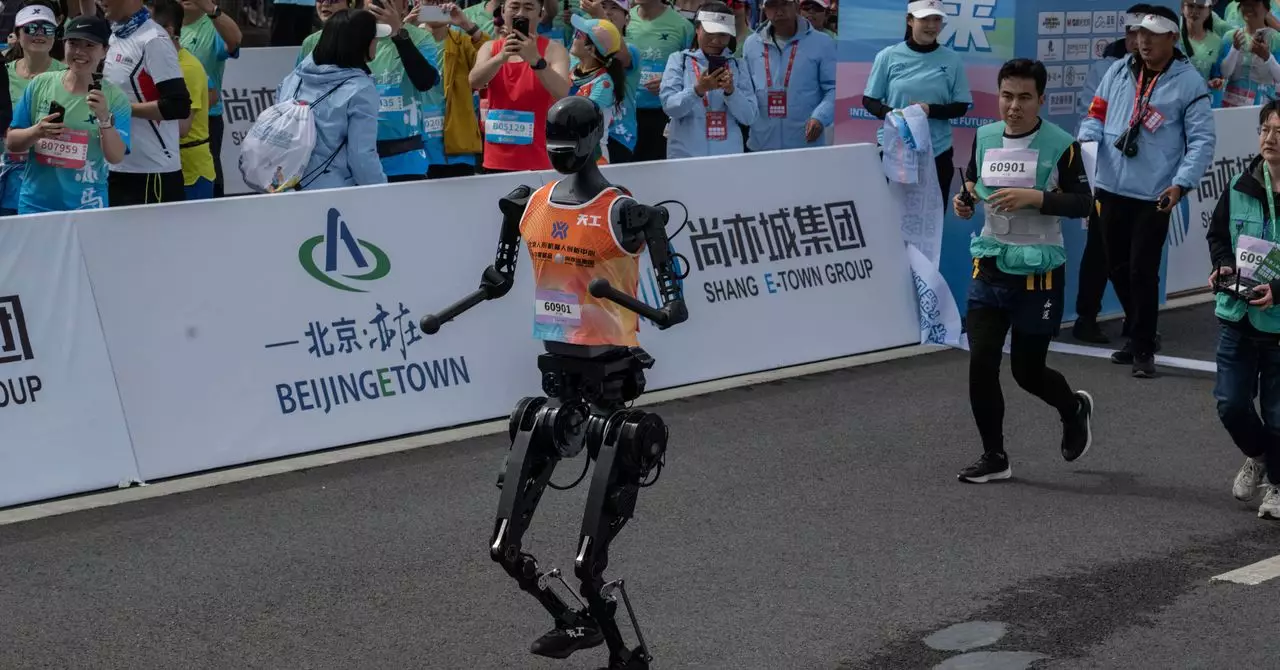In a world increasingly dominated by technological advancements, the fascination with humanoid robots has surged. Yet, as captivating as their capabilities might appear—like dancing, racing, or performing kung fu—these attributes often distract from a more pressing question: what is their actual utility in realistic scenarios? Dr. Fern’s observations raise an essential critique of the industry: are we merely mesmerized by spectacle, or can these robots offer meaningful solutions to complex human tasks? As we witness the spectacle of humanoid robots racing for entertainment, it becomes clear that their potential lies not in mimicking human motions, but instead in executing diverse and practical functions in everyday settings.
Artistry vs. Functionality: The Race for Relevance
Recently, humanoid robots gathered at a racing event, showcasing bipedalism as a primary requirement for participation. Among them were a remarkable variety of robots, from a pint-sized 2-foot-tall contender dressed in a cheerleading uniform to a towering 5-foot-9 a champion robot named Tiangong Ultra. This playful aspect of design draws attention, but it also raises questions about the criteria we value in evaluating these creations. Shouldn’t our focus shift toward their ability to perform tasks that align with market needs rather than their prowess in performing human-like antics?
The humor found in some robots sporting kid-sized sneakers, duct-taped limbs, or experimental designs highlights the playful nature of this competition but ultimately illustrates a deeper flaw in the expectations set for humanoid technology. The spectacle of setting records for speed, even at a sluggish pace, cannot eclipse the fact that the primary goal should be developing machines capable of solving real-world problems efficiently and autonomously.
The Downfalls of Humanoid Performance
The performance of many competing robots was less than stellar, showcasing a spectrum of failure rather than triumph. For instance, the Huanhuan bot—endowed with a human-like head that shook violently—embodied the limitations of current technology. Such moments serve as a poignant reminder of the developmental shortcomings inherent in humanoid robotics. As we cheer for advancements, it is essential to recognize that failures illustrate valuable lessons. Each robot’s struggles—like Shennong’s lack of direction—underscore the need for further innovation beyond the realm of choreography and novelty.
The unsightly reliance on duct tape to mend robotic limbs or reattach heads may appear comedic but emphasizes two core issues in humanoid robotics: first, the need for better structural integrity; and second, the limitations of human control over increasingly complex machines. Robots can only be as functional as their underlying designs allow, suggesting that pushing boundaries in terms of aesthetics may detract from their core purpose.
Collaborative Mechanisms: Humans and Robots in Tandem
One noteworthy aspect highlighted during the competition was the integral role of human operators accompanying each robot. Ranging from guiding the robots with leashes to using control panels for remote navigation, these operators were crucial for success—or, more accurately, survival—on the racecourse. This raises an essential consideration in the dialogue about humanoid robots: rather than solely focusing on autonomy, we should investigate how humans and robots can co-function effectively in a synergistic environment.
The portrayal of these robots as if they were akin to remote control cars demonstrates a sober reality. Even with an inspiring desire for autonomous technology, the immediate future of humanoid machines appears to lie in blending human dexterity and robotic efficiency, enhancing both parties’ abilities to achieve tasks together. This hybrid approach could steer the conversation toward meaningful developments that prioritize functional innovation rather than chasing headlines with superficial performances.
The Road Ahead: Balancing Illusion with Innovation
As the market gazes toward the immediate visual impact of humanoid robots, it is crucial to maintain a critical eye on what these technologies ultimately aim to accomplish. Dr. Fern’s analysis of their current trajectories suggests an imminent pivot towards more pragmatic utility. The industry can only thrive if competition fosters creativity in building robots that are not just amusing but are able to handle genuine challenges of daily life, from healthcare to manufacturing.
In navigating the expansive landscape of robotics development, we must harness the balance between aesthetic intrigue and reality-based functionality. Successful advancements require prioritizing the real-world prowess of humanoid machines over a fixation on their spectacles. Striving for an entertaining veneer might be tempting, but sustainable progress lies in fostering innovation that resonates with real user needs—something the current racing spectacle seems to lack.

